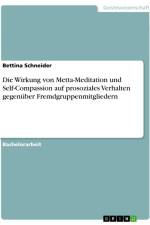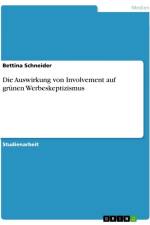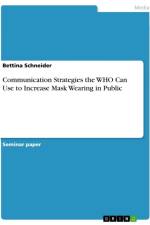von Bettina Schneider
15,95 €
Seminar paper from the year 2020 in the subject Communications - Media and Politics, Politic Communications, grade: 1,0, University of Koblenz-Landau, language: English, abstract: How can mask-wearing in public be effectively increased? Institutions like the World Health Organization (WHO) aim to improve global health. Through the use of effective strategies to communicate with the public, they could persuade people towards using face masks and prevent them from diseases. However, first, they need to face the difficulties of designing an effective message that can lead to such a persuasion. This includes certain operational tasks, like selecting credible sources, choosing a message strategy, and determining the optimal setting or channels through which the communication is to be delivered. To help the WHO facing those difficulties, this paper will focus on persuasive communication strategies. To do so, the paper is structured as follows: In the first section, two different strategies to promote mask wearing in public worldwide will be provided. Then, in the second section, some basic considerations the WHO should make before adapting those strategies will be highlighted. Lastly, the paper will end with a brief summary.By the end of 2019, an outbreak of severe pneumonia of unknown cause in Wuhan, China was reported to the World Health Organization (WHO). A few months later, the coronavirus has taken over the world and infected over 14 Million people worldwide, causing almost 600,000 people¿s death. Therefore, the search for effective strategies to prevent people from getting COVID-19 is currently the primary goal of many countries¿ governments. Because social distancing and a total lockdown are just short-term solutions, the need for alternative solutions is rising. According to Cheng et al. (2020), community-wide face mask wearing may help to slow down the outbreak of COVID-19. As shown by those researchers, this is due to the reduced emission of people¿s respiratory droplets.






